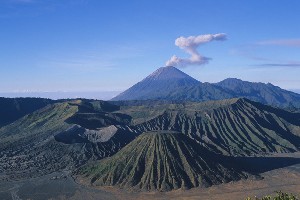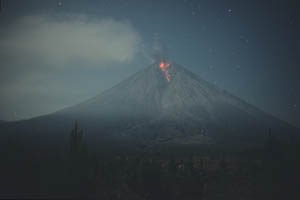

Ash cloud from Semeru. View over Tengger Caldera with Bromo crater towards bottom left of picture.
Nighttime view of summit eruption of Semeru Volcano.
 |
 |
|
Ash cloud from Semeru. View over Tengger Caldera with Bromo crater towards bottom left of picture. |
Nighttime view of summit eruption of Semeru Volcano. |
 |
|
Sketch Map of Semeru Volcano and Areas on the ring-plane affected by Lahars and Pyroclastic Flows. Click for larger version in seperate window. |